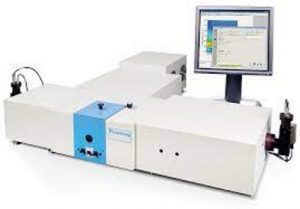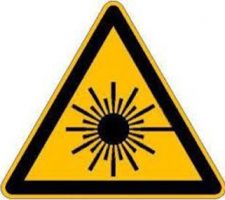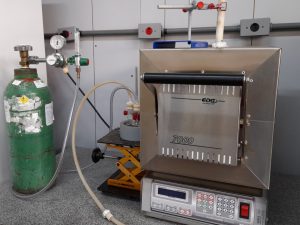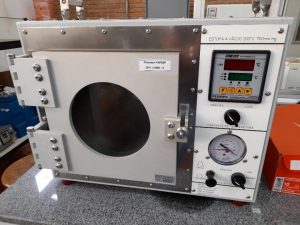Menu
Menu
Facilities
The NanoLum Lab is part of the Department of Chemistry within the FFCLRP – USP, and we have all facilities for synthesis of lanthanide-doped nanostructured materials, and also for the full spectroscopic characterization of luminescent samples, we share the spectroscopy lab with Profa. Dr. Rogéria Rocha Gonçalves from Mater Lumen Group.
Spray Pyrolysis setup
The laboratory scale SP device was developed with CEMES/CNRS – France collaboration. The spray is generated by ultrasonic vibrations of a piezoelectric pellet (2.4 MHz). The droplets are collected by an air stream (0.3m3/h) and drawn into a drying area maintained at 100–120 °C, then a decomposition-densification area where the temperature may be adjusted up to 1200 °C. Collection of the dried powders is achieved by an electrostatic collector.


Type: Fluorolog 3 Horiba Scientific (model FL3-22)
Fluorescence spectrometer
Photoluminescence setup, enabling high resolution excitation and emission measurements, from a dual excitation and emission monochromators, as well as the photomultipliers Hamamatsu R928 (visible) and H10330-75 (near infrared). The combination of a Xe arc lamp allows selecting an excitation in the range from 250 to 900nm. At the emission side, three detectors are available for measurements between 300 and 2800nm. The setup can be extended with a platinum crucible in a LINKAM Scientific temperature-controlled stage (T95-HT), for measurements between 77 and 873 K.
Lasers
Useful for decay time measurements and excitation of phosphor materials, direct outputs at 1550 nm, 980 nm, 808 nm and 355 nm are available.


Type: TA Instruments Q600 SDT
Thermal Analysis
Simultaneous Thermal Analyzers measure both heat flow & weight changes in a material as a function of temperature (or time) under a controlled atmosphere up to 1500°C.
Furnaces
A series of muffle furnaces is available for synthesis, annealing and sintering under air or reactive atmosphere.


Laboratory oven
With this device accelerated aging can be tested at a combination of temperature and humidity, and also the low pression.

